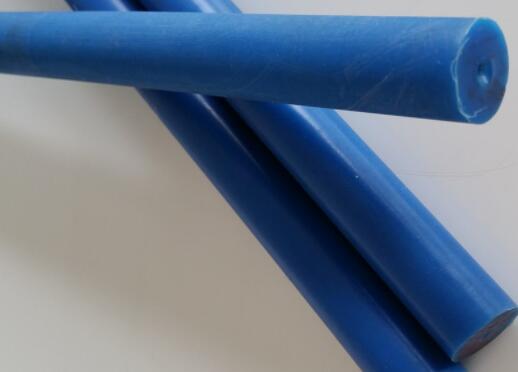UHMWPE rod is an amazing engineering plastic which can solve many problems that other engineering plastics cannot. UHMWPE Rod is not as well-known as other plastics but is still highly important and has clear advantages over other more common engineering plastics.
Because UHMWPE rod has excellent abrasion resistance it is often used for sand, gravel or aggregate process applications. These environments are incredibly harsh on any bearing material but UHMWPE is one of the few engineering plastics capable of withstanding such punishing abuse.
UHMWPE Rod can also be used for low friction pulleys because of its very low co-efficient provides a bearing medium that is very free running and exceptionally long lasting. It is often found in food production environments where high volumes of containers need to be guided along conveyors or production lines. Because it has very low moisture absorption, it is also found in some high demand areas of marine applications. It’s sometimes used in some cryogenic components due to its low operating temperature abilities.
Because of its resistance to wear and impact, UHMWPE continues to find increasing industrial applications, including the automotive and bottling sectors. Since the 1960s, it has also been the most commonly used material for total joint arthroplasty in orthopaedic and spine implants.
Application for UHMWPE Rod:
- UHMWPE rod is usually chosen for it's low co-efficient of friction and so means it will produce bearings, bushes or pulleys that are highly free running, low friction and durable
- UHMWPE rod is also remarkably abrasive resistant. Therefore the UHMWPE rod can be used in high demand environments such as grit or gravel and have a longer life span when compared to other materials
- UHMWPE rod can often be used in high demand components in the food industry because it has a very low moisture absorption. UHMWPE rod has FDA approval and means that bearings etc. will not expand due to any moisture absorption
- UHMWPE rod is used in the marine industry for pulleys because of its low friction and minimal moisture absorption
Advantages of UHMWPE Rod:
- UHMWPE is odourless, tasteless, and nontoxic,
- Has extremely low moisture absorption
- Very low coefficient of friction
- Self-lubricating and is highly resistant to abrasion.
- Very resistant to water, moisture, most chemicals
- Resistant to UV radiation, and micro-organisms.
- UHMWPE only becomes brittle at temperatures below −150 °C.













